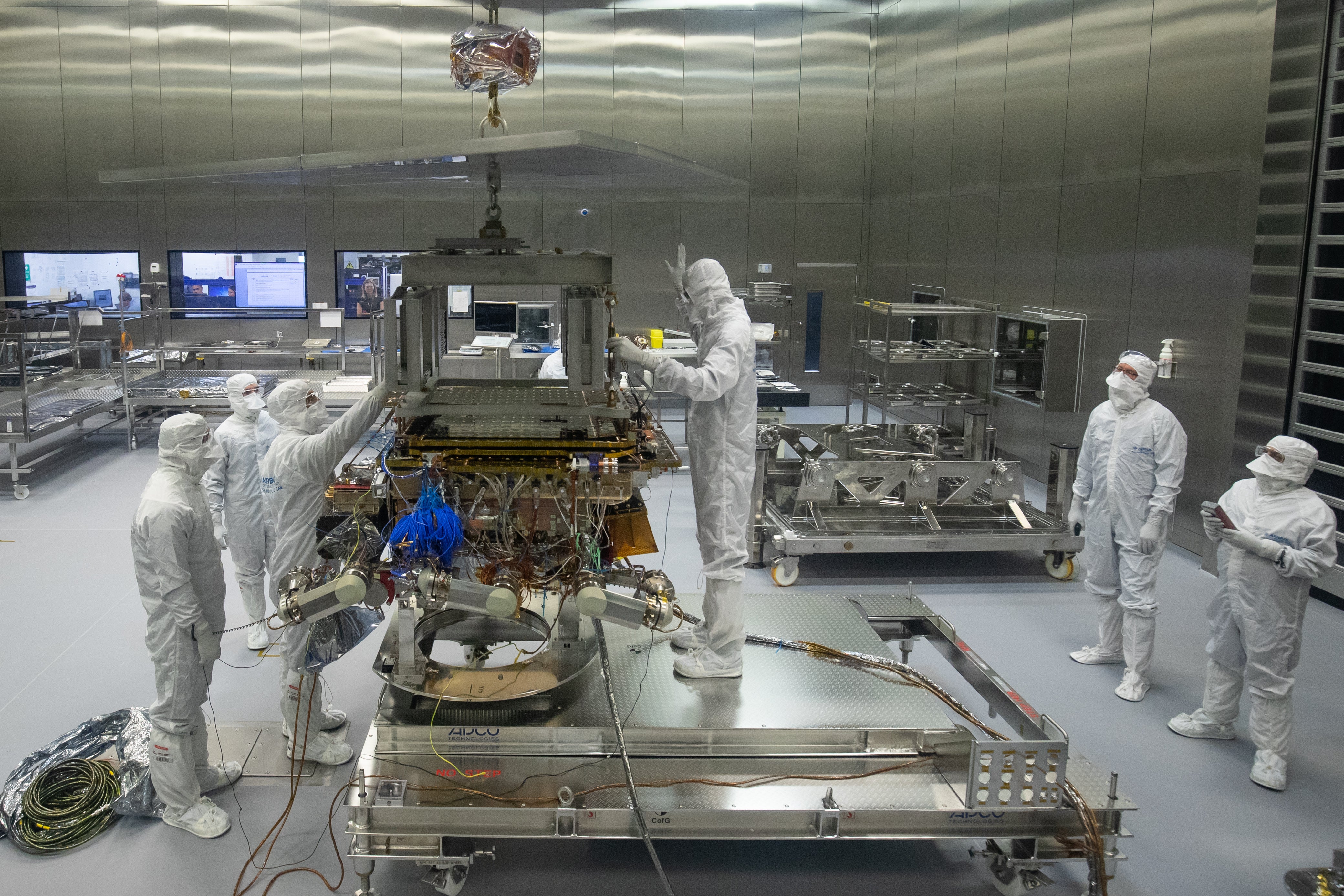Recently, Nasa revealed exciting details of new findings from Mars. Scientists have discovered tiny patterns of unusual minerals in the clay-rich rocks on the edge of Jezero Crater – an ancient lake once fed by Martian river systems, and the exploration site of the Nasa Perseverance Rover.
These “leopard spot” patterns have been hailed as a potential sign of past microbial life due to their similarity with traces left behind by microorganisms on Earth.
The jury is still out on whether these are actually signs of life, but this discovery has reignited the discussion about the previous existence of life on Mars, and the possibility that it could still survive there today.

We’ll need many different lines of evidence to answer this question, but there is precedence for considering certain Martian environments as currently habitable.
Early Earth and early Mars were relatively similar, but this similarity didn’t last long. Both had atmospheres and magnetic fields that offered some protection from harmful radiation originating from the Sun, along with bodies of liquid water on their surface. We know that these conditions led to the origin of life on Earth, so it is possible that the same could have happened on Mars.
While life on Earth was beginning to thrive, Mars lost its magnetic field as its core cooled. This exposed the planet to harmful solar rays which began to erode the atmosphere. As the atmosphere disappeared, the Martian surface became colder and drier, eventually becoming the freezing desert we know today.
This is why many scientists don’t expect to find living organisms on the surface of Mars – it is simply too inhospitable for life as we know it. Instead, the hope lies in uncovering microbial life hidden in protected underground or icy regions.
Where could life survive on Mars?
Possible locations for Martian microbial life include caves, inside or underneath ice sheets at the poles, or deep underground. All of these environments have analogues (environments with certain similarities) on Earth that host microorganisms. So it is not much of a stretch to consider that if life began on Mars, it could still be holding on in these extreme niches.
Perhaps the most plausible of these is underground – the Martian subsurface. Extending from a few metres to several kilometres deep, it is thought to be the planet’s most stable and long-lived potential habitat.
While the surface has been cold, dry, and generally inhospitable for much of Martian history, the deep subsurface may have offered more favourable conditions. On Earth, the deep biosphere – the life that survives beneath the surface – provides a useful comparison.
A substantial amount of Earth’s microbial life exists underground, surviving in cracks within rocks. These ecosystems are dominated by lithoautotrophs – microbes that get energy by feeding on those rocks. Methane, a potential byproduct of some lithoautroph feeding habits, has even been detected on Mars. But there are many ways to generate methane underground without life, so right now this doesn’t tell us much.
The potential for a deep biosphere hinges on factors including the availability of liquid water, a source of energy, space to live in, and tolerable temperatures. There is possible evidence for the existence of liquid water below the surface of Mars, but this is still under debate.
This would facilitate chemical reactions known as water-rock reactions which generate energy for microbes to live on. Because of its weaker gravity, rocks on Mars may be less compressed than those on Earth and remain more porous at depth, providing space for microbes to live in.
At the same time, Mars produces less heat from its interior, which means temperatures suitable for life could extend nearly twice as deep underground as they do on Earth.
Scientists spend a lot of time analysing places on Earth – Mars analogues – to try to understand the possibilities for past and present life on Mars. These environments are not identical to Mars, but they share at least one important feature such as extreme dryness, high salt levels, or high UV exposure.
Earth’s deep subsurface is one example, and others include the Atacama Desert in South America, sediments at Lake Salda in Turkey, and salts found in Utah’s Pilot Valley. Researchers around the world are investigating these sites on Earth to better understand how Martian conditions might affect life and its preservation. As no one location on Earth could possibly match all Martian conditions, scientists also run controlled laboratory experiments.
An example of this is the use of specialised “Mars chambers” to reproduce Martian environmental conditions such as its atmosphere, radiation exposure, and temperature. All of these investigations combined help us to better understand the potential for life to exist on Mars.

Signs of life today?
Right now there is no conclusive evidence of life on Mars past or present. Nasa’s “leopard spots” are the most promising signs we have, but these are still inconclusive. If life exists on Mars today, it is almost certainly not widespread like on Earth – our probes and rovers would have seen it.
However, important opportunities lie ahead. The upcoming European Space Agency (Esa) ExoMars Rosalind Franklin rover will be able to drill up to two metres below the Martian surface. This will give us a chance to study the shallow subsurface of Mars which may contain living microorganisms. But this is only the start—most scientists agree that we will need to go deeper.
Drilling deep on Earth is still a huge challenge and there is so much we don’t know about our own subsurface life. Probing the deep subsurface of Mars will be a major scientific and engineering challenge, but one that may hold the key to finding existing Martian life.




